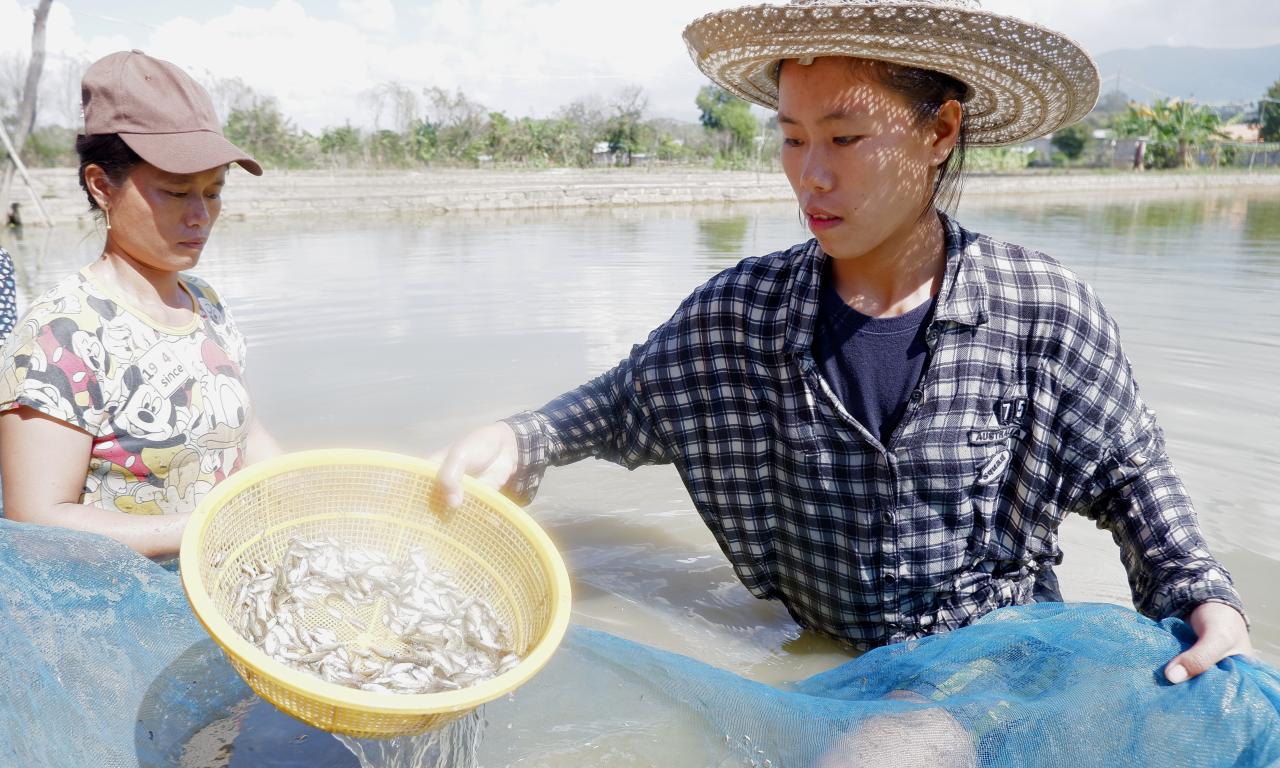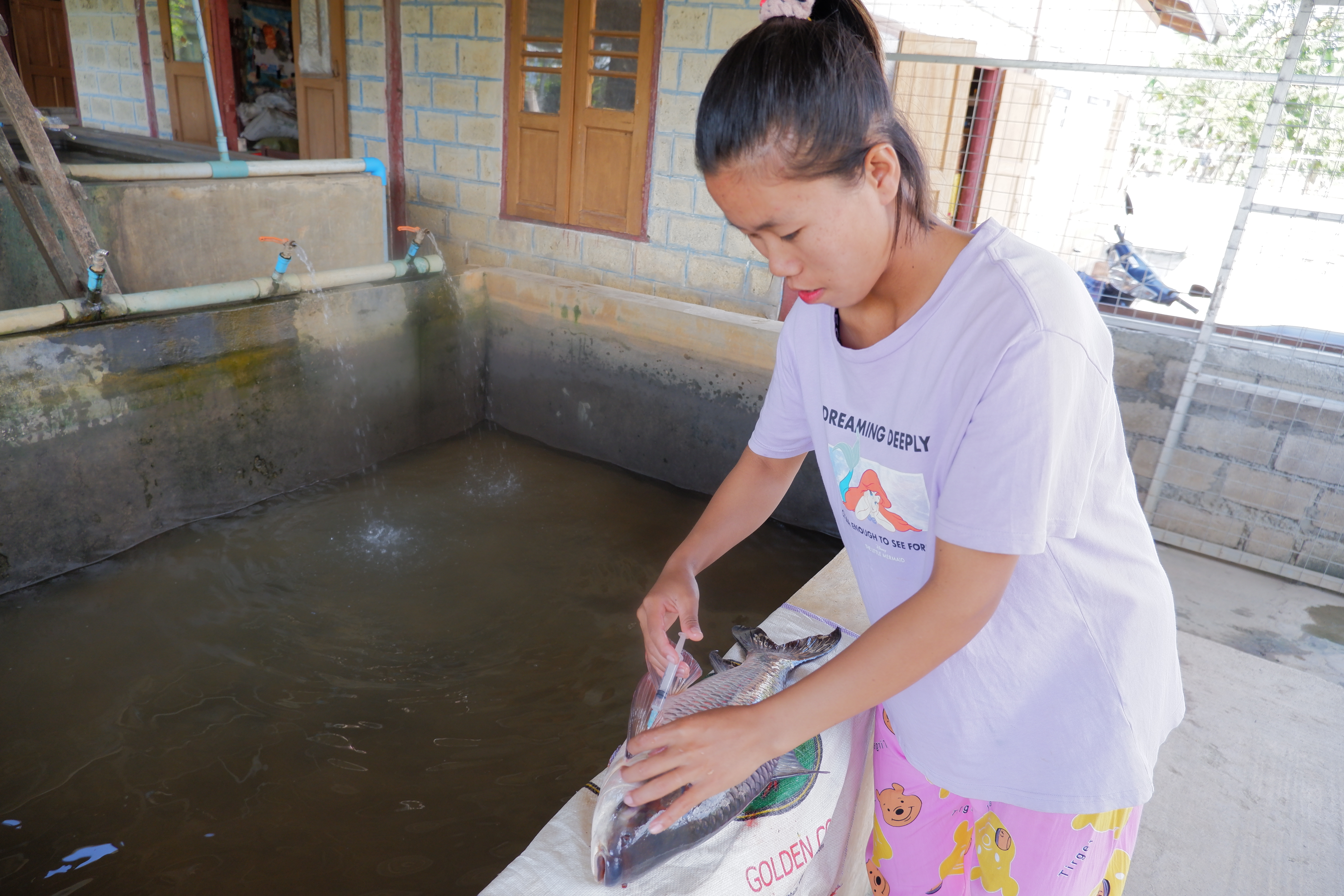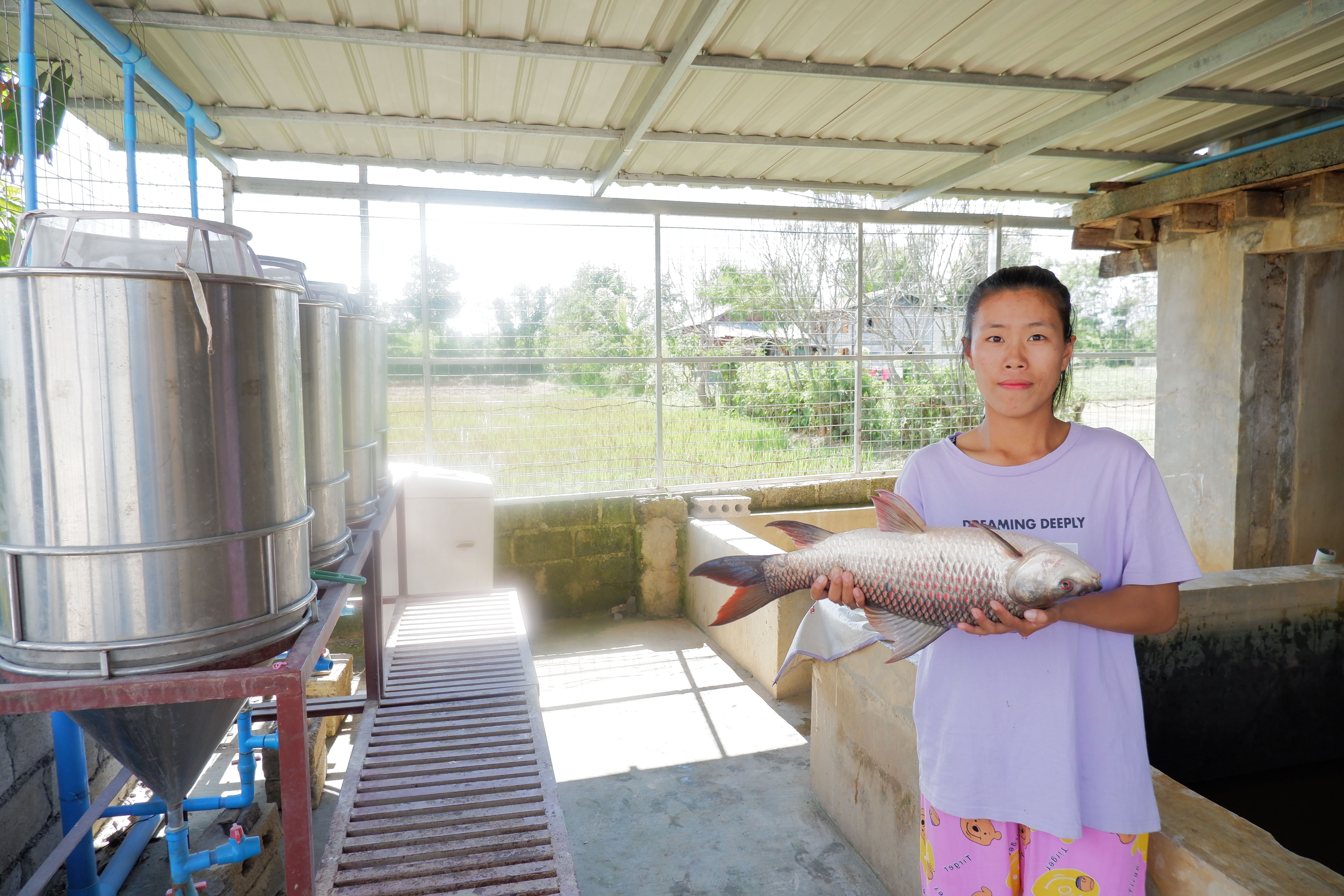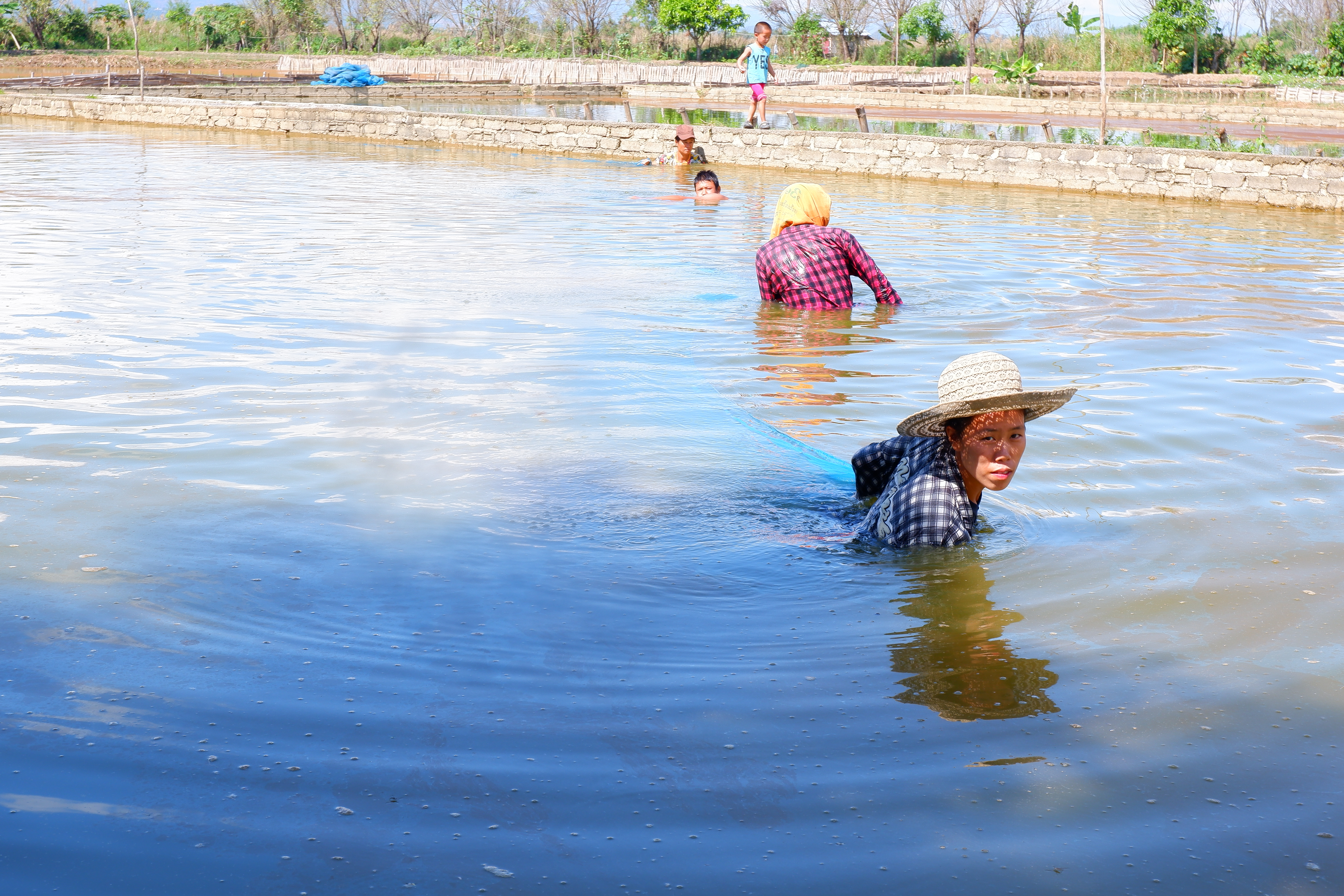
- Nan Win Htwe now leads her family’s hatchery business together with her sister after the demise of their father.
- Besides running the hatchery business, she has now diversified her family business to include producing aquatic food for consumption and additional income for her family.
- She suggested organizing field trips to and internship programs at successful aquatic food enterprises to encourage and motivate greater youth participation in aquatic food systems.
Youth are the future of aquatic food systems.
A 2021 report by the High Level Panel of Experts on Food Security and Nutrition of the Committee on World Food Security acknowledges the importance of youth participation in the transformation of food systems and the need to invest time and effort to engage them. However, many challenges remain and youth need to overcome multiple barriers to become involved in aquatic food systems.
Through this series, WorldFish features prominent youth in aquatic food systems across the supply chain, be they input suppliers, producers, processors, traders or academics, and share their successes, failures, opportunities and aspirations to inspire other youth to enter the sector.
Nan Win Htwe has been working in her Southern Shan State family-owned fish hatchery for four years. The 23-year-old Htwe started learning how to breed fish from her father and elder sister when she was 19. From assisting in the production of fish seed, Htwe now leads the hatchery business together with her sister after the demise of their father.
Building on a solid foundation

Before his passing, her father had shared with Htwe invaluable experience in induced fish breeding that he had obtained over the years to enable her to lead the family business. The family business has been receiving assistance from the Fish for Livelihoods project funded by the United States Agency for International Development (USAID) since 2020.
“In Southern Shan State, the market price for fish is good and only a few hatcheries are producing fish seed. The hatchery business is contributing a good income for our family,” shared Htwe.
“In addition, we can consume fish throughout the year from our grow-out ponds without relying on other sources. This motivates me to continue the family business in the aquatic foods industry,” added Htwe.
Well-equipped with the hatchery experience from her father as well as carp hatchery management training provided by the Fish for Livelihoods project, she is eager to expand her hatchery business to produce a diversified range of fish seed including common carp, grass carp, silver carp, rohu and silver barb, which would increase income for her family while also meeting the seed demand of aquatic food producers in Southern Shan State.
“I intend to produce seed of other fish species such as silver carp and mrigal carp. Due to technical and broodstock constraints, we haven't been able to produce these species during my father's time,” said the young and energetic Htwe.
Diversifying across the supply chain

Besides running the hatchery business, she has now diversified her family business to include producing aquatic food for consumption and additional income for her family.
“After taking over the hatchery, I explored new markets to sell our fish seed to new customers. We are now growing fish to provide nutrition and additional income for my family. I am also interested to expand to the fish trading business if I have the financial capacity and linkages with relevant stakeholders,” shared Htwe.
In addition to the carp hatchery management training, she also received infrastructure support from the Fish for Livelihoods project.
“With the support of WorldFish through the Fish for Livelihoods project, we managed to upgrade some of our aging hatchery facilities including both the broodfish and nursing ponds. This has helped improve productivity and effectively, increased our incomes,” shared Htwe.
Encouraging youth participation in aquatic food systems

Htwe has observed that a greater number of young people are interested in aquatic food systems these days. However, she believes that there is much to be done to ensure the sustainability of the sector in the future.
To encourage and motivate greater youth participation in aquatic food systems, Htwe suggested organizing field trips to and internship programs at successful aquatic food enterprises across the supply chain from hatchery to production, processing and trade. This would allow them to observe for themselves how profitable the aquatic food industry can be and its importance to the nation’s food and nutrition security.
“We need to highlight this in the public domain more often. Be it in educational institutions, economic forums or any communication channel that can reach the youth, we need to amplify this message so that more youth would be interested in the sector,” said Htwe.
“I wish that Myanmar's aquatic food sector would continue to improve and provide employment and nutrition to many with the increased participation from younger people,” added Htwe.
